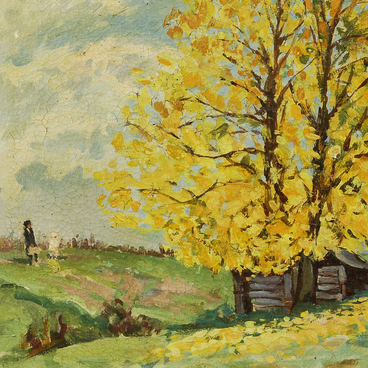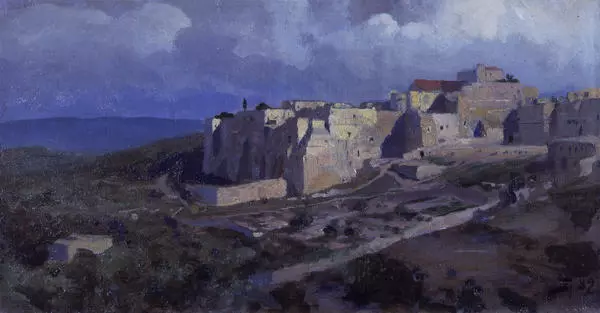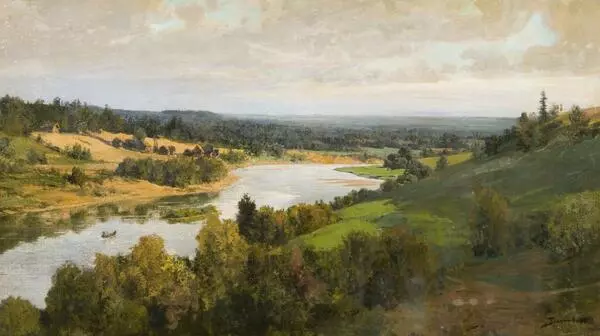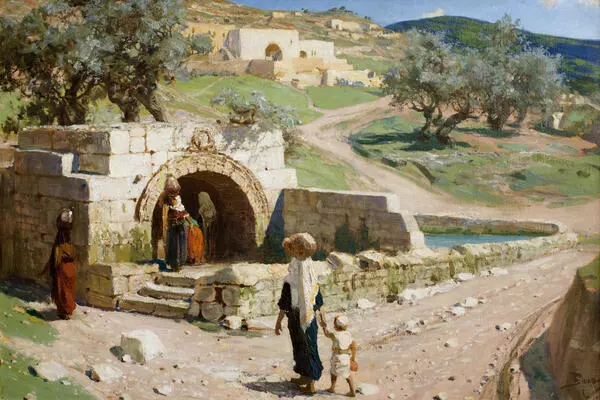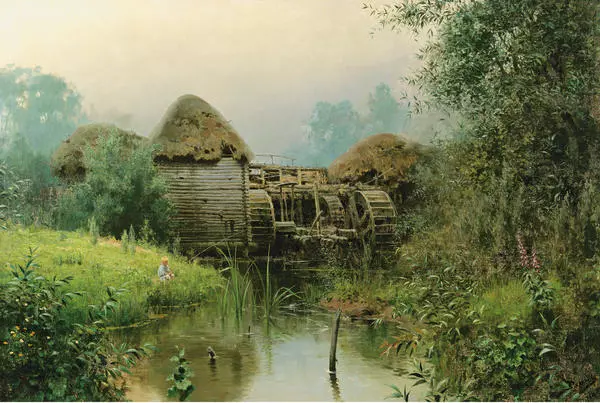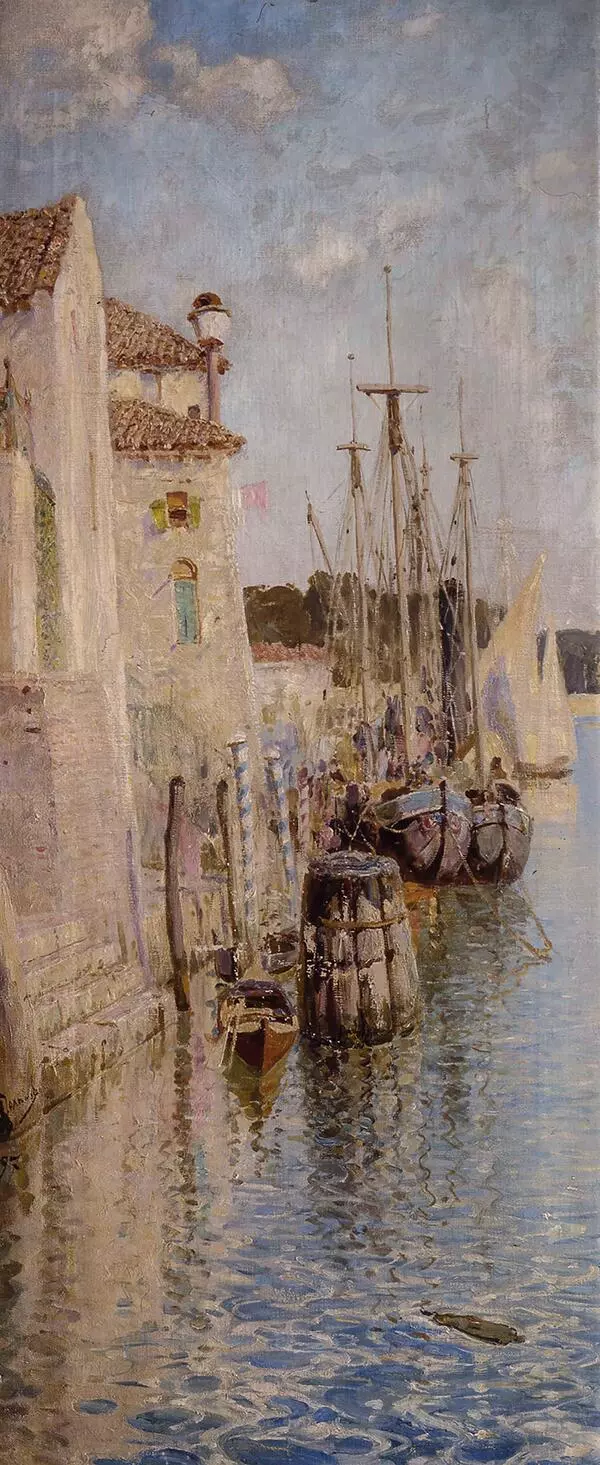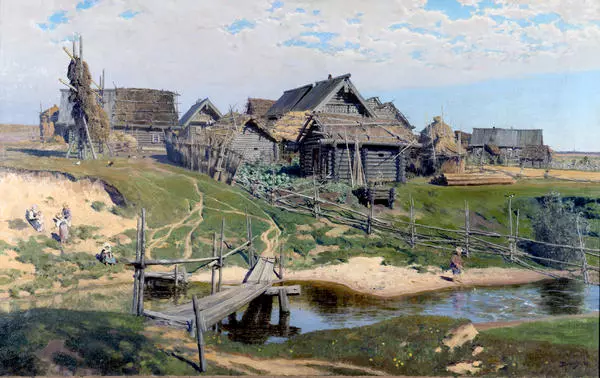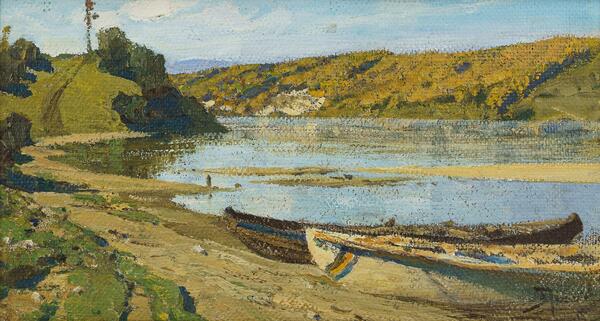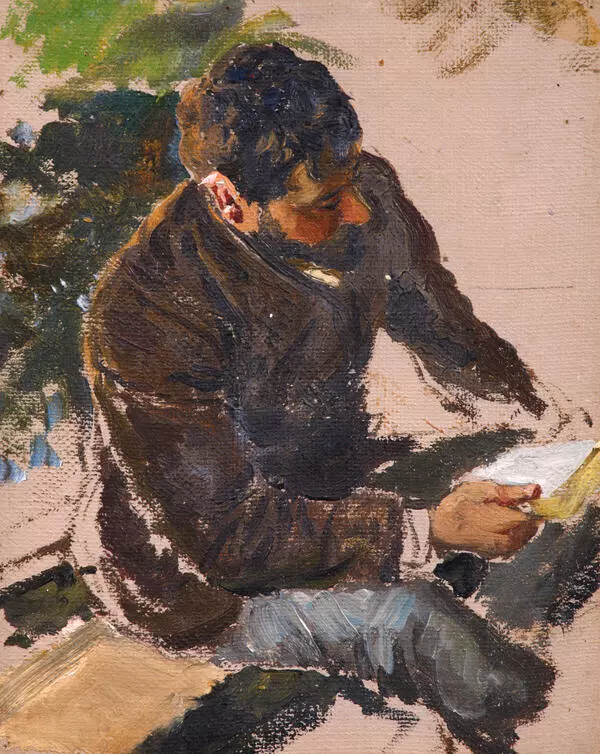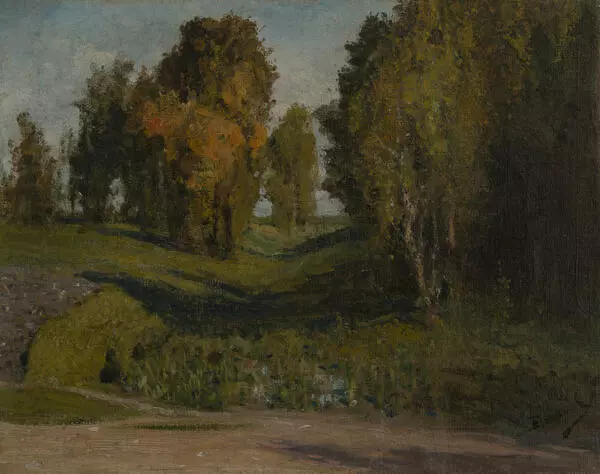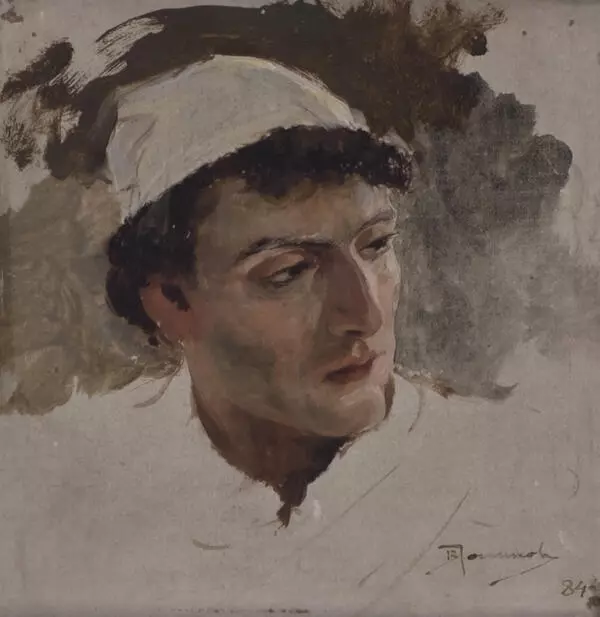Vasily Polenov created Palestinian Landscape in the 1880s. Researchers speculate that he depicted the Dead Sea, a salt lake in the Middle East in the area that was historically Palestine.
The artist chose a horizontally extended canvas format for the study. Therefore both the mountain range and expanse of the waters fit easily on a small canvas. The immensity of the landscape is emphasized by the barely visible sailboat on the right side of the canvas. Compared to the mountain peaks and the long strip of water, it looks very tiny. The artist often used an elongated composition to give the landscape epic proportions and a particular expanse. He adopted a similar format for his large-scale paintings Early Snow and Kurgan, as well as for river views of the Oka and Volga rivers.
In the study Palestinian Landscape, the artist subtly worked through an aerial perspective — he depicted the outlines of the mountains in the distance as blurred, using bluish tones. The sharp peaks lose their clarity, and the artist painted them softly, without any specifics. At the same time, the foreground with turquoise waves is depicted as having clear contrasts.
Vasily Polenov lived from 1844 to 1927. He was one of the first Russian painters to focus on plein air painting in his work. Plein air comes from the French ‘en plein air’, which means ‘outdoors’. In these works, artists try to capture the effects of aerial perspective, to convey the movement of air and how light trembles through it. For example, in daylight distant objects always become bluish and blurred due to the density of the air mass; in the haze of dawn, all objects generally tend to glow slightly with golden light.
When working outdoors, artists usually create not paintings but studies — quick preparatory groundwork. They do them in one sitting, while the sun has not changed its position. To catch the effects of light, plein air studies are put together using large, sweeping strokes. Artists show with light spots of color how air and light at a certain moment affect the trees, mountains, rivers, or architecture. In his large paintings, Vasily Polenov combined the freshness of plein-air perception and a feeling of contemplative calm that is characteristic of Russian art.
Although the artist’s legacy contains many historical depictions, and a large cycle about the earthly life of Christ, art critics often define him as one of the founders of the school involving the Russian national landscape. He was also a talented teacher — Konstantin Korovin and Isaac Levitan studied under him.



